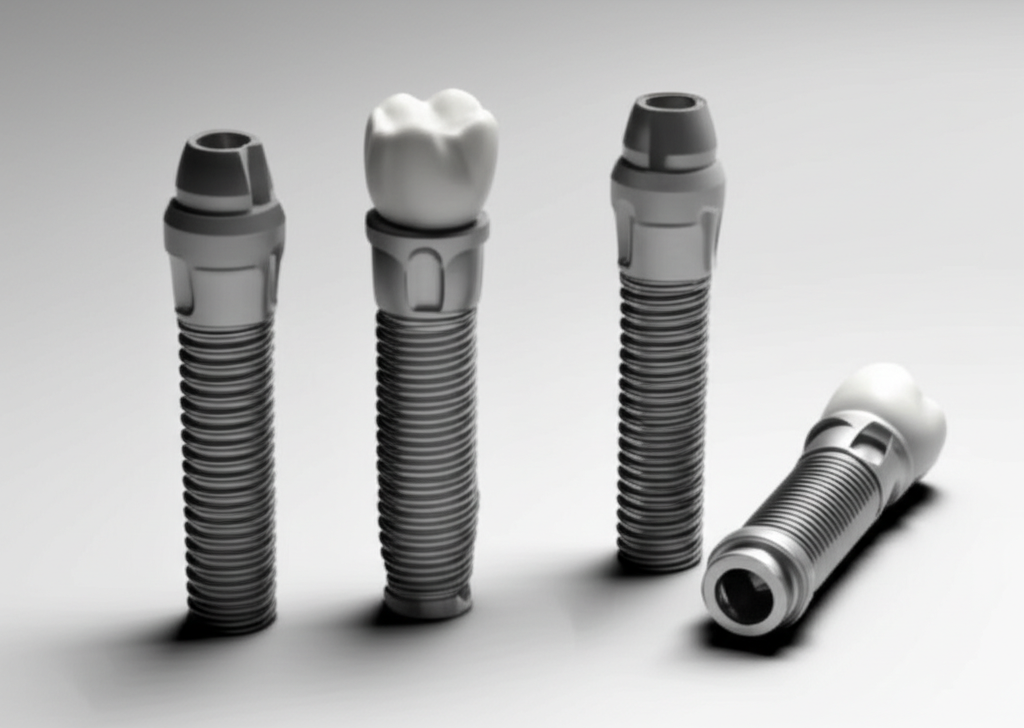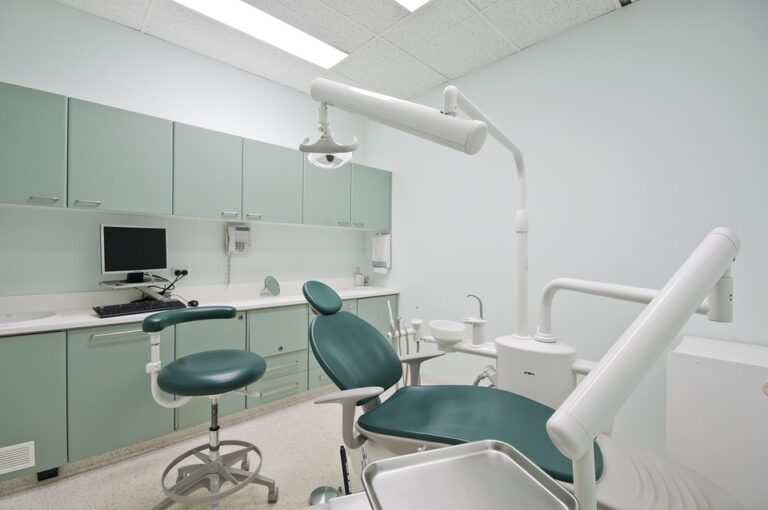
What Are Screwless Dental Implants? A Simple Guide to Modern Tooth Replacement
Table of Contents
- Outline Overview
- Introduction: My Journey Into Screwless Dental Implants
- Understanding Dental Implant Basics
- Unpacking the “Screwless” Concept in Dental Implants
- Types of Screwless Dental Implant Systems
- Cement-Retained Restorations
- Friction-Fit or Conical (Morse Taper) Connections
- One-Piece (Monolithic) Dental Implants
- Advantages of Screwless Dental Implant Solutions
- Disadvantages and Key Considerations
- Who Is a Good Candidate for Screwless Dental Implants?
- The Procedure and Recovery Process: My Hands-On Experience
- Longevity, Maintenance, and Success Rates: What I’ve Learned
- Comparing Screwless and Screw-Retained Implants: Lessons From Practice
- Final Thoughts: Empowering Your Dental Decisions
Outline Overview
Before I start, here’s a quick look at what I’ll talk about:
- What screwless dental implants really are (and what the name really means)
- The main types (cement-retained, friction-fit/Morse taper, and one-piece)
- Good and bad points of each kind—based on real cases and my own experience
- Who screwless implants are best for
- What getting them and healing are like
- How long they last and how to take care of them
- How these compare to the old screw type
- Tips, stories, and advice from seeing these used in real life
Introduction: My Journey Into Screwless Dental Implants
If you’re like me, the first time you heard “screwless dental implants,” you probably thought, “Hold on, aren’t all implants screwed into the bone?” The name is odd and sounds a bit like something out of a sci-fi movie. But as I started learning more, worked with lots of patients, and talked with dental experts, I found out “screwless” isn’t what people think. It’s actually about how the tooth or bridge is put on the implant—not how the implant itself is put in your mouth.
I’ve seen patients get excited when they hear there’s a new, nice-looking choice for them. I’ve also seen the confusion when dentists use words without explaining. So, let me show you everything I’ve learned about screwless dental implants—what makes them special, who they work best for, and what you should know before deciding what’s right for you.
Understanding Dental Implant Basics
Let’s start simple. A dental implant is a small titanium or ceramic post (like a fake tooth root) set into your jawbone. In a few months, your bone grows onto it—this is called osseointegration. Once everything heals, the dentist adds a piece in the middle (the abutment) and puts a fake tooth (crown) or a bridge over it. That’s your new tooth.
Most dental implants for many years have used tiny screws to hold all these parts together. This works well and is easy to fix if something goes wrong. But as dental tech got better, dentists like me started looking for ways to make them look better, be easier to fix, and last longer for everyone.
Unpacking the “Screwless” Concept in Dental Implants
Here’s where things get interesting. When I first heard of “screwless” implants, I thought they just stopped using screws completely. Actually, the screwless part almost always means the way the top part (the tooth or bridge) is attached—not how the implant in your jaw is held. The implant in the jaw still uses threads and screws so it doesn’t loosen up in the bone. The new part is how the tooth on top is held. No screw holes showing on the tooth. No place for food to get stuck. No little screw to come loose or snap. That’s the nice part of screwless systems.
Dentists and dental labs, including some great implant dental laboratories I’ve worked with, have made new ways like using glue, press-fit, or making it all one piece to put the crown on the implant. Each one has good and bad features, so it’s really important patients know what’s what.
Types of Screwless Dental Implant Systems
Let me show you the most common kinds you’ll see. From my years working with dentists and patients, here are the big three.
Cement-Retained Restorations
Think about building a house, but using strong glue instead of bolts to hold the roof. That’s how this works. The dentist screws the middle piece (abutment) into the implant. Then they glue the crown (your tooth) onto that. From the outside, you see a neat, natural tooth—never a screw hole.
How It Works:
- Implant goes in the bone (there’s still a screw, but you can’t see it)
- The abutment is screwed in
- The crown is glued (cemented) on top—no screws showing
Why Everyone Likes It:
- Looks great—nothing breaks up your smile; no tiny fillings or holes to see
- Nice if the implant is slanted, so there’s no way to put a screw in from the top
- Most crown and bridge labs make these to fit nicely and work with your bite
But Be Careful:
- If there’s ever a problem, it can be hard to get the crown off. You might even have to cut it off.
- If any glue (cement) is left under the gums, it can lead to swelling, infections, and even bone problems. I’ve seen this happen and it’s not fun!
- Over time, the glue can wear out and the crown can come loose.
If you go this way, make sure your dentist is really careful about cleaning up glue and making things fit right. Good work here means your tooth will last.
Friction-Fit or Conical (Morse Taper) Connections
Now let’s talk about cool engineering. If you’ve ever pushed a cork into a bottle and felt how tight it can be, that’s the idea. The abutment is pushed into the implant with a cone shape that holds it super tight—there’s no screw holding the top piece. Brands like Ankylos and Bicon use this kind of system.
How It Works:
- Implant in the bone
- The top piece is pressed in very tightly—friction keeps it in place
Why I Like It:
- No screws means almost no chance of something coming loose or breaking
- It’s so tight that bacteria can’t really get in (which keeps gums and bone healthy)
- Easy to keep clean and simple on maintenance
The Tough Parts:
- If you need to get it out, you may need special tools or even have to get a whole new crown. Not great if you need repairs later.
- It has to be placed just right the first time. Not much you can do if it’s a little off.
These are great for health over the long term, especially if you’ve had trouble with screws coming loose. But taking the crown off down the road is not easy.
One-Piece (Monolithic) Dental Implants
Think of it like an all-in-one gadget. There’s no separate abutment or screw—the implant and the post are all part of one piece.
How It Works:
- The “root” and post are all one part
- The crown or bridge is made to fit over that post
Why They’re Good:
- Fewer things can go wrong or get mixed up; fewer dentist visits
- Good for small spaces or “same day” teeth
- Can save money for some people
But Some Drawbacks:
- If the implant goes in a little bit crooked, you can’t fix it later
- If something goes wrong, you may have to change the whole thing, not just a part
I’ve seen these work very nicely for single front teeth or where someone’s bone is thin. But you can’t change it much after, so it’s only for folks with an easy jaw shape and a good dentist planning things.
Advantages of Screwless Dental Implant Solutions
So, why would someone want a screwless system on top? From what I’ve seen—and from talking to lab techs and dentists—the main reasons are:
- Looks: No screw holes in your teeth. Your new tooth looks just like the real thing.
- Fewer Problems: No worries about screws coming loose or breaking.
- Healthier Gums: With friction-fit, it’s so tight that germs can’t get under the crown, so you’re less likely to get gum problems.
- Less Glue Trouble (for friction-fit): If there’s no glue used, there’s nothing left under the gums to cause infection.
- Easy in Some Cases: For one-piece implants, things can move faster and involve less work.
For example, I had a patient who kept having screws loosen with his old implant. We switched him to a friction-fit one. It felt even stronger and in the next year, his gums looked better.
Disadvantages and Key Considerations
Of course, nothing is perfect. Here’s what I’ve noticed can be tough about screwless dental implants:
- Hard to Remove: With glue (cement-retained) and friction-fit, it’s sometimes really tricky to take the crown off. Repairs are a pain.
- Glue Problems: Any glue left behind is bad news. It can cause infections. Only pick dentists who are REALLY careful doing this.
- Tough to Get Right: Friction-fit and one-piece types need to be put in very exactly. Not everyone has the skill or tools for that.
- Not Much Room for Mistakes: With one-piece systems, you can’t change the angle after it’s in.
- Price: Some kinds (like friction-fit systems) can charge more at the start, but you might save some if you avoid future repair work.
Bottom line? The best type for you depends on what your mouth, your goals, and your dental team can do.
Who Is a Good Candidate for Screwless Dental Implants?
When I talk to people about their options, I try to be open. Screwless systems are really good for:
- People wanting the best looking result (no holes)
- Those who’ve had trouble with screws in the past
- Patients with certain jaw shapes or not much bone (where one-piece might fit)
- Anyone worried about germs—the tight seal with friction-fit can help a lot
But it’s not for everybody. Some people still need the easy repair and options that screw-retained systems give (like if you might need repairs in the future). If you have odd angles, thin gums, or need a big bridge, your plan has to be custom. I always suggest finding a dentist who’s worked with all the main systems, or talking to a good lab that knows both.
Be sure to tell your dentist the full story about your health, jaw bone, and any old problems before you pick. A good dentist will listen and explain all the choices in simple words.
The Procedure and Recovery Process: My Hands-On Experience
You might be thinking, “Does screwless mean a different surgery or bad healing?” Not really. It’s about the same as with the old system.
- Step 1: The oral surgeon puts the implant into your jaw (still using a screw to keep it tight)
- Step 2: You heal for a few months, so the bone sticks to the implant
- Step 3: Instead of screwing on a fake tooth, your dentist glues it, pushes it in (friction-fit), or uses a one-piece from the start
Healing time is pretty much the same, no matter what. But in my experience, if you go with glue (cement), the dentist and you have to be more careful at check-ups to make sure no glue is left under the gums.
Longevity, Maintenance, and Success Rates: What I’ve Learned
You might wonder, “Will this last as long as the regular kind?” In my work and talking to some really good dental ceramics labs, the answer is yes—if it’s done right.
- How Long They Last: Both screwless and screw-retained types last a long time (usually over 95% are still working after ten years)
- How to Care for Them: Screwless types may need more checkups, especially to catch glue or removal problems early
- Cleaning: Brushing, flossing, and seeing the dentist are still super important. Bad cleaning means any system can fail
- Dentist Visits: Regular check-ups help catch any small problems before they get big (and cost a lot)
Remember, you own these teeth—treat them with care! Even the best design can’t beat bad cleaning.
Comparing Screwless and Screw-Retained Implants: Lessons From Practice
Let’s put it in plain words. From what I’ve seen, both systems have good and bad points:
- Looks: Screwless systems (glued or friction-fit) look better—no holes
- Easy to Repair: Screw-retained is much easier to fix if something happens. The dentist can take the tooth off without hurting it.
- Problems: Screwless types don’t have screws getting loose, but can have glue problems
- Cost: Screwless sometimes costs more at first, but might save money if it means less fixing later
If you like analogies, think about cars. Some are easier to fix, others are more comfy or nice looking. Your best choice is about what fits your needs—not just cost or a list of features.
Knowing about all your choices helps you make a better decision about your teeth.
Final Thoughts: Empowering Your Dental Decisions
After years in dentistry, here’s what I’ve learned. All the new tech is always changing, but the big goal is the same—helping people get healthier and feel good about their smiles. Screwless dental implants aren’t magic, and they don’t fit everyone. But they do give a nice, safe, and sometimes better-looking option for lots of people.
If you’re thinking about implants, ask your dentist about screwless choices. Get details. Ask how to care for them. Ask to see pictures of real cases. Work with a dentist who teams up with a good lab—because planning things the right way always shows in your smile.
Remember: your path may not be the same as others, and that’s fine. Pick what feels right, and know that with the right info and a good team, you’ll be smiling for years to come.
Written from my perspective as a dental professional with hands-on experience in modern dental implantology and patient education.








